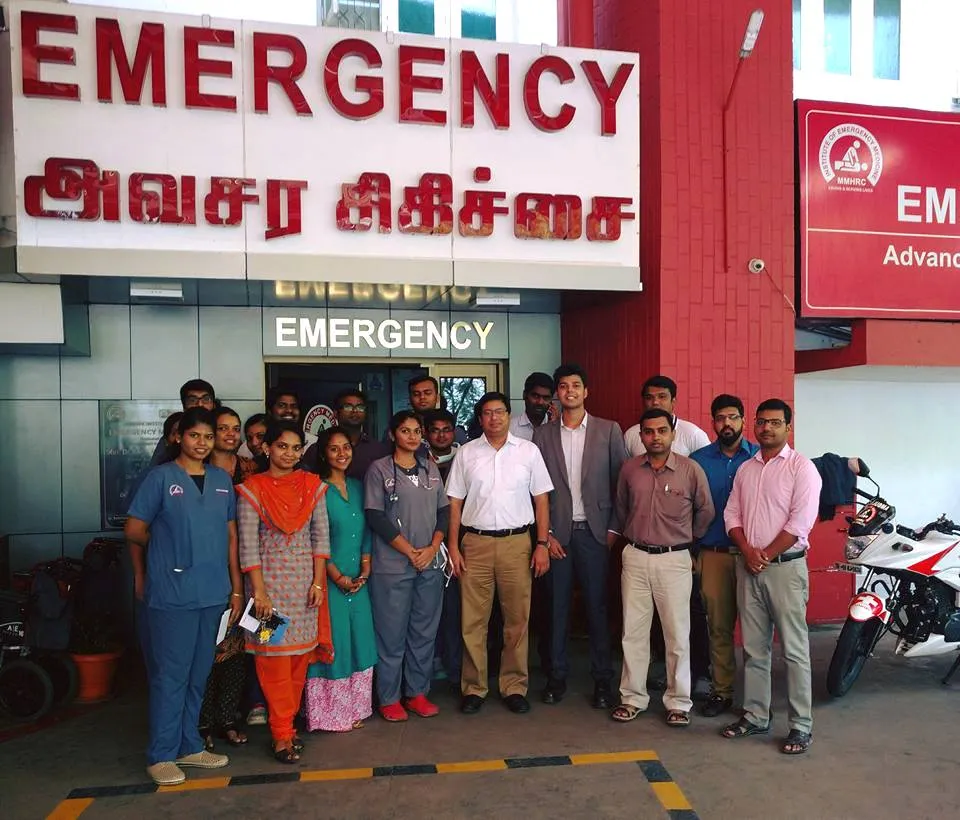From Casualty to Care : The Evolution of Emergency Medicine in India (1994-2024)
It’s been 30 years since Dr. Suresh David established the first fully functional emergency department at CMC Vellore in 1994, which has since become the alma mater for numerous EM consultants currently leading top hospitals across India.
During my travels throughout the country—from bustling cities like Mumbai, Delhi, Hyderbad to remote towns in rural India—I witnessed a remarkable transformation in emergency medicine (EM) since those early days.
Not long ago, EM departments primarily functioned as "casualty wards," where resident medical officers (RMOs) would call in specialists—be it orthopedic surgeons or cardiologists—to treat patients. The RMOs had limited autonomy, often leading to inefficient care.
Today, the scenario is completely different. Major hospital chains have significantly invested in their emergency services, staffing them with highly trained emergency physicians who can diagnose and treat patients on the spot.
For instance, at a leading hospital in Delhi led by Dr. Sanjay Jaiswal and Dr. Ankur Verma- A 68-year-old man with right-sided weakness arrived at the emergency room and was thrombolysed in 6 minutes from time of arrival, after ruling out all contraindications (source). While the ideal door-to-needle time in many systems is typically around 90 minutes, the best hospitals in India can achieve times closer to 30-60 minutes, particularly in metropolitan areas.

What’s even more impressive is that this efficiency extends beyond major cities. In Madurai, I had the privilege of visiting a hospital led by the brilliant Dr. Narendra Jena, where an impressive team of residents is making waves in emergency care that rivals some of the best facilities in the UK.
They manage everything from road accident trauma to cardiac emergencies with remarkable skill and speed. This level of training and resource allocation enables them to treat patients quickly and effectively (source).
A critical element in this evolution is the rigorous training and upskilling of physicians. Many doctors are now preparing for competitive global exams like the MRCEM, which not only enhances their knowledge and skills but also aligns them with international standards. The MRCEM helps candidates focus on essential areas of emergency medicine, giving them the confidence and competence to handle high-pressure situations.
So, why does this matter to the NHS? Because it highlights that India's healthcare talent is ready for the world stage. The NHS can't rely solely on who's available today; it needs to build for tomorrow. That’s where Indigo comes in. By partnering with us, NHS Trusts can identify and nurture this talent early, bridging the gap between potential and opportunity.
We help ensure that the doctors who will shape the future of UK healthcare are not just skilled but also motivated, committed to continuous improvement, and ready to meet the demands of tomorrow.
India’s emergency medicine transformation offers valuable lessons for the NHS. With the right investment in people and infrastructure, we can turn a system around.
By tapping into India’s growing pool of highly trained emergency physicians and specialists, we help the NHS recruit not just for today, but for the future.
Through our Sustainable Talent Partnerships Strategy, we leverage our global network and high-level relationships with key associations, colleges, and thought leaders to connect the best talent with NHS Trusts. This approach drives cost efficiencies, while our VIP career concierge service ensures clinicians receive ongoing support as they progress.
For younger physicians deciding on a specialty, now is the time to take action. I can guide you over the next two years to help prepare you for a dynamic career in emergency medicine, positioning you for success on the global stage.
Contact Details:
Contact Priyen Potnis, Managing Director of International Recruitment, to learn how Indigo can support your recruitment needs or help shape your medical career.
Email: Priyen@indigohealthcare.co.uk
Mobile number: +91 887 9252151
LinkedIn profile: https://www.linkedin.com/in/priyenpotnis/